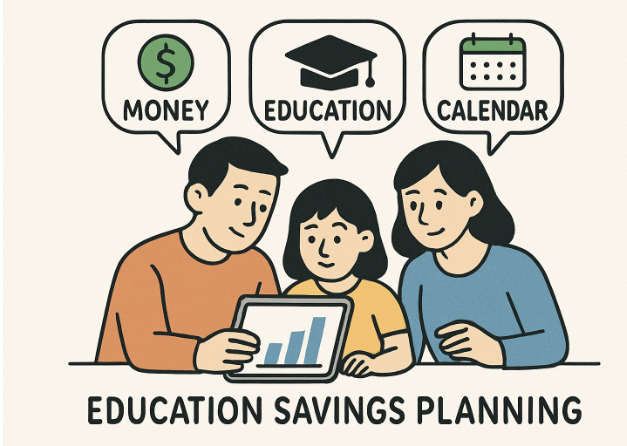
Saving for your child’s post-secondary future is a significant financial milestone, and a Registered Education Savings Plan (RESP) remains a cornerstone of Canadian education funding. Understanding your ideal annual RESP contribution can seem daunting. Still, the right approach helps maximize available government support, foster compound investment growth, and fit RESP savings into your financial plan.
RESPs are flexible yet powerful vehicles for education savings. But before diving into numbers, it’s important to familiarize yourself with RESP types specifically, the family RESP vs individual choices which can impact your contribution strategy over the years.
Deciding how much to contribute each year is central, but various factors influence your optimal RESP plan. The combination of government incentives, catch-up rules, and the magic of compounding makes the art of RESP funding as important as the science.
Understanding RESP Contribution Limits
Knowing the contribution caps and mechanics is vital before determining your ideal annual RESP contribution. The RESP lifetime contribution limit is $50,000 per beneficiary. Over-contributing can trigger penalty taxes, so carefully tracking your inputs is critical. While there are no formal annual limits, your yearly strategy should be optimized for government grants.
- Lifetime Contribution Limit: Each beneficiary can receive up to $50,000 throughout the RESP’s life. Any excess is penalized with a 1% per month tax on the overage.
- No Annual Cap, But Annual Targets Matter: The absence of annual limits means you control your pace, but annual targets ensure you maximize grants and spread savings over multiple years.
Maximizing the Canada Education Savings Grant (CESG)
The Canada Education Savings Grant (CESG) represents one of the strongest reasons to contribute to an RESP. The federal government matches 20% of annual contributions, up to $500 annually per beneficiary. To collect the full $500 CESG each year, you must contribute $2,500 annually.
- Basic CESG: A 20% match on the first $2,500 saved annually per child ($500/year in grants).
- Additional CESG: Low- and middle-income families may qualify for another 10–20% on the first $500 contributed yearly.
For most families, aiming for a $2,500 annual contribution per child for about 14 years is ideal; this results in $35,000 in contributions and $7,000 in CESG grants. An additional $1,000 in year 15 secures the final $200 in CESG for the lifetime cap of $7,200.
Catch-Up Contributions: Making Up for Lost Time
Families who miss years of optimal RESP deposits can still access CESG funds through strategic catch-up contributions. Unused CESG rooms carry forward, and you can contribute up to $5,000 a year to receive a maximum of $1,000 CESG in that year. However, you can only catch up on one missed grant year at a time, so catching up fully may take several years.
Catch-Up Example
If you skipped two years, contribute $5,000 ($2,500 per eligible past year) next year and get a $1,000 grant. Catching up works best if started as early as possible, given compounding interest and grant deadlines.
Investment Growth: The Power of Compounding
RESPs don’t just benefit from government grants; the real growth often comes from investments compounding over time. For example, steady annual contributions of $2,500 with a modest average return of 5% can snowball into a significant nest egg when your child reaches post-secondary age. The earlier you start, the greater the effect of compounding growth on your RESP balance.
Alternative Contribution Strategies
Not all families can contribute steadily yearly; some prefer to front-load RESP contributions with a large initial lump sum. While this can generate substantial investment returns, annual CESG awards mean you won’t be able to collect the entire grant in one year. Ideally, balancing lump-sum contributions with ongoing annual deposits helps maximize both compound growth and CESG receipts.
Additional Government Incentives
Beyond the CESG, lower-income families should consider the Canada Learning Bond (CLB). The CLB offers an initial $500, with $100 more annually until the child turns 15, totaling up to $2,000. No personal contributions are needed—simply opening an RESP qualifies eligible families for this grant, making it valuable support for those on tight budgets.
Tailoring Contributions to Your Financial Situation
While maximizing CESG and RESP growth is optimal, not every family can meet the $2,500 annual target. The key is regular, consistent saving within your means. Even modest contributions, when started early and invested wisely, will greatly benefit your child’s educational future and reduce student debt later.
Final Thoughts
Determining the right RESP contribution strategy is more than just chasing government grants it involves designing a sustainable and flexible plan that fits your financial capacity and goals. Families can build a strong and resilient education fund with a mix of annual contributions, smart catch-up decisions, and leveraging all available grants, ensuring children have the resources to pursue their dreams.
